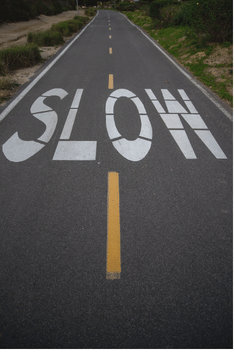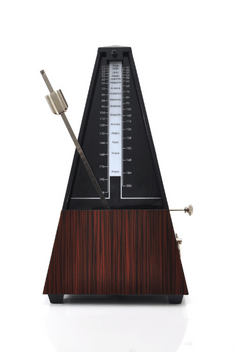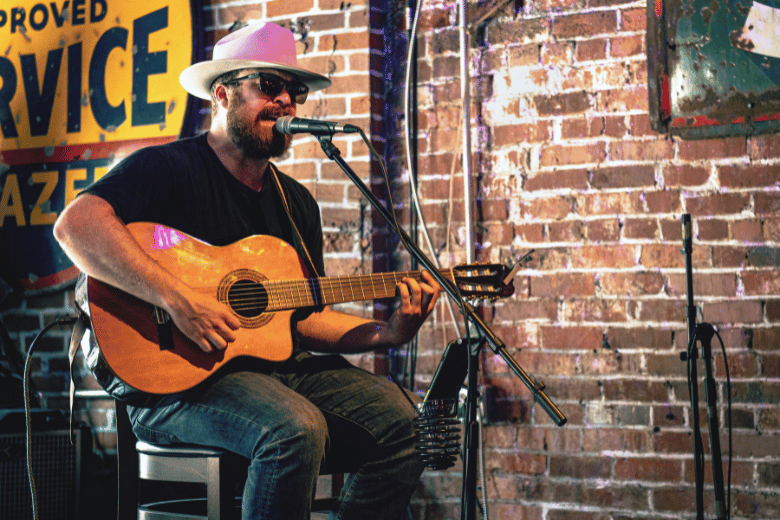People tend to underestimate how challenging it is to sing and play guitar simultaneously. But our friends down at becomesingers.com are experts in the field. Lets see how they can help you.
“So you can sing and play the guitar, but when you try to do both at the same time, things get complicated.
You must be able to multitask smoothly and effectively while making it appear effortless.
So how do you achieve this and take your musical skills to the next level?
We’re here to walk you through the steps and give you the best advice on perfecting singing and playing guitar. So you can perform your favorite songs alone in your bedroom, in your living room surrounded by your friends and family, or live on stage in front of hundreds of people.“
Taylor Swift, Ed Sheeran, and Shawn Mendes are just a few examples of hugely popular musicians known for performing while simultaneously singing and playing the guitar.
The guitar has become an essential part of these musicians’ identities, and it’s hard to imagine them without one.
Yet, few realize how difficult it was for them to perfect the ability to play dozens of songs flawlessly on stage without missing a beat. Without pausing to consider the notes or chords, they’ll play next. But before gaining that level of confidence on stage, even these well-known performers had to start somewhere.
You’ll need to start someplace, too, if you want to achieve the same confidence level. But you don’t have to tackle it alone; we’re here to provide you with the best advice and techniques for learning to sing while playing the guitar.
All you have to do is listen to our advice, be patient, and practice!
7 Tips for Playing Guitar and Singing at the Same Time
1- Start With an Easy Song

Don’t want to go too wild and start learning songs from bands like Megadeath or Van Halen. You’d be better off choosing a song with a basic chord structure.
The fewer chords, the better, as these will be easier to memorize. Additionally, selecting a song that fits your vocal range would be best, then pick a song accordingly.
There are many simple and beautiful songs you can check out here if you still need to decide on a song.
2- Memorize the Lyrics

To learn how to sing and play the guitar simultaneously, you need to master multitasking. That is why you must ensure that you have memorized the lyrics to guarantee that the first task is complete before moving on to the next one, playing the guitar.
One way to memorize lyrics is to prioritize the song’s lyrical structure verse by verse and repeatedly until the words stick. Another way is to write them out by hand. This method helps reinforce the words in your mind and helps you better understand the lyrics’ meaning.
3- Work the Guitar Part Into your Muscle Memory

What does that mean, exactly? Muscle memory is the ability to perform a task flawlessly, repeatedly, with little conscious effort or no thinking.
This muscle memory is developed through extensive training and the repetition of the desired action. Everyday activities include typing on a keyboard or riding a bicycle.
The relentless repetition you’ve had to put in over the years is why you have become so skilled at carrying out these actions. For example, if you know how to ride a bicycle and someone asks you to sing while riding it, you should be able to do so easily.
You must go through the same process while learning the guitar part. Repeatedly practice the guitar melody and chord progression until they come naturally to you. The more you practice, the more your muscles will become accustomed to the movements required to play the guitar.
Additionally, you must pay attention to your technique and ensure that you use the proper form if you want to use your muscles efficiently and effectively. Remember, practicing bad habits will also build muscle memory!
Once you reach a point where you feel like you’re playing the guitar without thinking, you’re prepared to combine singing with guitar playing.
If you are interested in a discovering the incredible mental benefits of playing guitar, see our in depth study below.
4- Hum While you Play

Try humming the song’s melody before considering singing the lyrics when you play. It will help you get comfortable with the melody and the chord changes before you try to sing and play simultaneously. It will also help you develop your pitch and get a better sense of the overall shape and structure of the song.
Additionally, it will allow you to familiarize yourself with the tune and perfectly time your chord changes.
Hum the song’s melody while playing the guitar chords until you feel comfortable enough to start singing along while you play.
Humming is also a great technique to use to warm your vocal chords up.
5- Slow down

Slowing down a piece of music when you are learning allows you to focus on individual elements such as melody, harmony, and rhythm. It will also help improve your accuracy, develop your sense of rhythm, and practice difficult passages more effectively.
To master this technique:
1- Start singing the first verse while dropping the song’s tempo almost by half.
2- Once you’ve perfected the first verse, move on to the chorus, and continue doing this to all the song’s sections.
3- Once you’ve mastered every element of the structure, play it again, this time at a slightly faster tempo. Repeat this process until you reach the song’s normal tempo. By now, you should be able to do it flawlessly and effortlessly.
6- Use a Metronome

A metronome is built to help you improve your timing and develop a “tempo sense” or a sense of rhythm so you can play with accuracy and precision.
Suppose you’re just starting out and want to improve your singing or playing gradually. In that case, a metronome will also help you slow down and play at a more manageable tempo.
Once you’ve gotten the hang of singing or playing perfectly to the beat, you can gradually increase the metronome’s tempo until you are at full speed.
7- Stay Motivated/Practice

Suppose you want to play and sing like the pros in the industry. In that case, you’ll need to create a practice period every day or week.
You’ll need to create a new habit, a regular practice time every day or week. This has to be away from interruptions, in a quiet place. Repetition is the key!
The more you practice, the better you will become at it. It’s as simple as that.
Repeating good habits will help improve your skills and confidence, which is especially important if you perform on stage in front of hundreds or thousands of people.
It will strengthen your self-discipline and help you stay focused and motivated. So it is crucial to practice good habits regularly. It will take patience and perseverance, but the results are worth it. It’s a skill you’ll have for life.
*Pro Tip – Use A Capo

If you want to learn a song but are concerned that it may be out of your vocal range, there is a way around it. Change the song’s key to better suit your voice by using a guitar capo.
You can change the song’s key by using a capo to raise the pitch of your guitar or a pitch-shifting pedal to raise or lower the pitch of your electric guitar. The only downside to this is, you cannot now play along with the original song.
This is a much more comfortable way to perform your desired piece. Use a capo to adjust the song to your vocal range. This way, any song is within your reach to learn.
Summary
Being able to perform song covers by your favorite musicians is one of the most fulfilling experiences a musician can have.
The ability to play it flawlessly is rewarding enough, regardless of whether you’re having fun in your room or performing live in front of an audience.
The challenge lies in learning to sing and play guitar simultaneously with the same ease and finesse, like our favorite artists do. Unfortunately, it’s not exactly a cakewalk.
You should be able to achieve your goals quickly if you practice regularly and listen to our advice.
Just be patient; we assure you it will be worthwhile.








